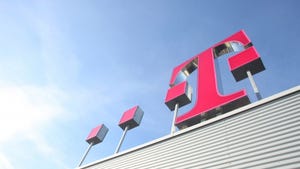Ericsson, TeliaSonera launch 'commercial' LTE site
Ericsson has underlined its '4G' supplier credentials with the launch in Stockholm of what it says is a 'commercial' LTE site. Rolled out in partnership with TeliaSonera, the site is not strictly commercial, since there are no paying customers on it, but it will form part of the Nordic carrier's commercial LTE network in Sweden's capital city, which is scheduled to go live in 2010.
May 26, 2009

By telecoms.com editorial
Ericsson has sought to underline its ‘4G’ supplier credentials with the launch in Stockholm of what it says is a ‘commercial’ LTE site. Rolled out in partnership with TeliaSonera, the site is not strictly commercial, since there are no paying customers on it, but it will form part of the Nordic carrier’s commercial LTE network in Sweden’s capital city, which is scheduled to go live in 2010.
The Swedish kit maker does not say how many bases stations have been deployed in the site, nor does it reveal the peak downlink and uplink speeds that the network can deliver. But Ericsson is obviously keen to emphasise that LTE is moving off the drawing board and that the Stockholm-headquartered supplier is at the vanguard of deployment.
“The unveiling of this site shows that LTE is no longer the story of the future; it is the story of today,” said Ulf Ewaldsson, vice president and head of product area radio at Ericsson.
Ericsson, along with Alcatel-Lucent, has also been selected by Verizon for LTE deployment. The US wireless giant says it aims to roll out commercial LTE services in 20 to 30 US markets next year.
Although Ericsson is putting its weight behind LTE for so-called next-generation mobile networks, it is also heavily touting HSPA and HSPA+ upgrades to mobile operators’ existing 3G networks.
“Later this summer we will see the first commercial HSPA+ networks using MIMO supporting 28Mbps, and that will be followed quickly by the first networks supporting 42Mbps, using multi-carrier as described in Release 8 of 3GPP,” Hans Beijner, a product portfolio manager at Ericsson, told telecoms.com. “Next year we will see further enhancements to HSPA, utilising multi-carrier with MIMO and 64QAM modulation, which enables bit-rates of 84Mbps. This is part of Release 9 but further enhancements will come in Release 10 where it will be possible to use MIMO and 64QAM on four carriers, which will enable [peak] downlink bit-rates of 168Mbps.”
But 3GPP operators will have to think very carefully whether or not they want (or need) to go the full HSPA+ hog or just simply wait until LTE arrives. HSPA+, using MIMO, requires additional base station hardware in the shape of antennas, which means extra capex. That could upset the business case for near- to mid-term HSPA+ deployment.
You May Also Like






.png?width=300&auto=webp&quality=80&disable=upscale)


_1.jpg?width=300&auto=webp&quality=80&disable=upscale)


.png?width=800&auto=webp&quality=80&disable=upscale)